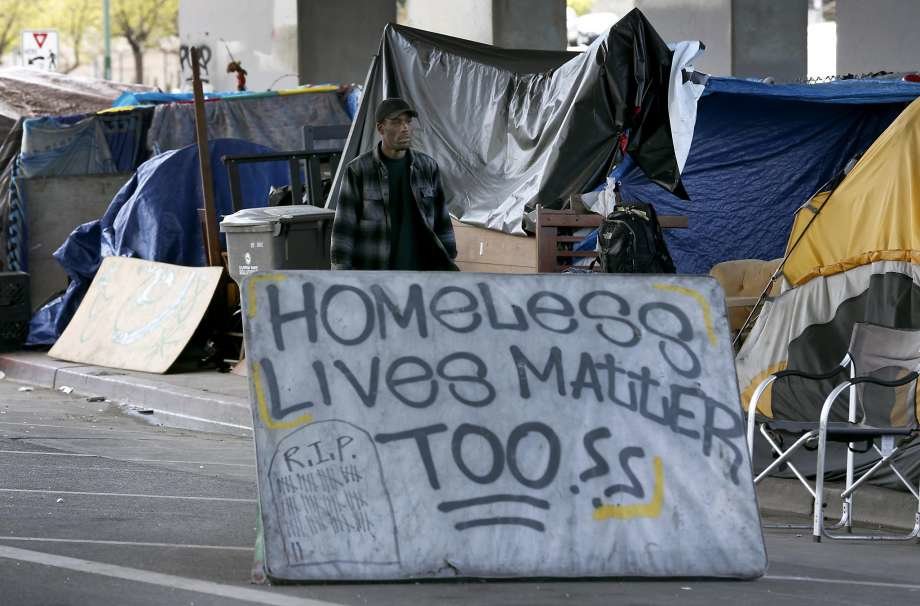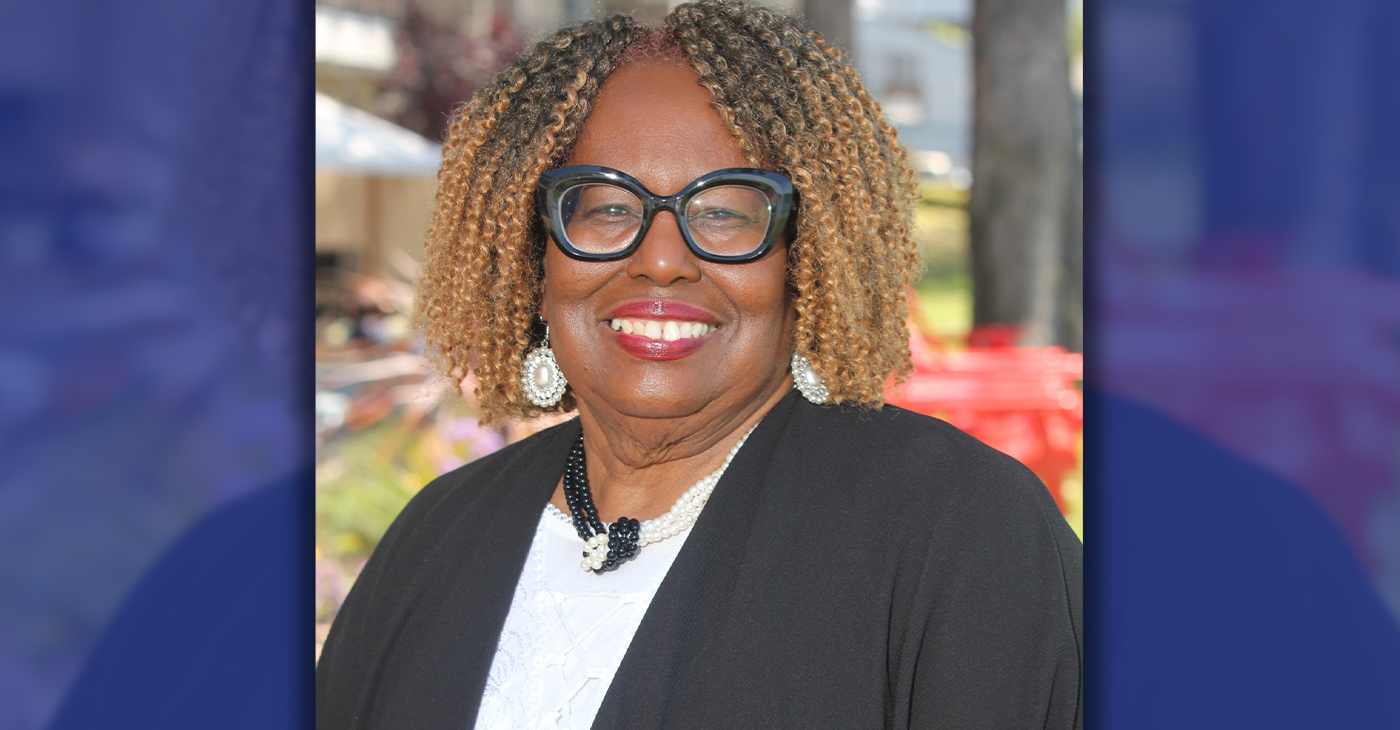Community
Homeless Census Rises by 47 Percent in Oakland

Vann: “Mayor Schaaf has never taken the homeless issue seriously.”
Schaaf finally says, “We now need to act with a sense of urgency”
The number of homeless people in Oakland has grown by 47 percent in the past two years, faster than in San Francisco and Berkeley, according to a county survey released this week.
Following federal guidelines, officials organized volunteers who conducted a one-day, “point-in-time” count, which found 4,071 homeless people in Oakland living in vehicles, on the street or in shelters, compared with 2,761 in 2017 and 2,191 people in 2015.
Of those counted, 861 were living in shelters, and 3,210 were unsheltered.
The homeless rate in Oakland has reached 940 per 100,000 residents, compared with San Francisco’s rate of 906 and Berkeley’s rate of 898.
“Of course, it is disappointing … that we’ve had the highest increase, at least in the Bay Area,” said Oakland Mayor Libby Schaaf in an interview with the S.F. Chronicle. “It shows that we need to do things differently, and we need to act with a sense of urgency that is greater than anything we’ve done in the past.”
“These increases are not unique to Oakland, they’re throughout this county, they’re throughout this state and throughout the entire West Coast,” she said in an interview on KPIX Channel 5. Nearby counties need to look at this crisis as “an all hands on deck situation,” she said.
According to the survey, 47 percent of Alameda County’s homeless are African American, while African Americans only make up 11 percent of the county’s population. Thirty percent of the county’s homeless are white, while 17 percent are Latino.
The survey also found that 57 percent of the homeless in Alameda County have lived in the county for 10 years or more. Forty percent said they are natives, while 12 percent said they moved to the area in the past year.
Thirty-four percent of the county’s homeless residents live in tents, and 23 percent live in vehicles.
The results of this new survey do not come as a surprise to the people who are working on the ground working with the homeless and advocating the solutions to the crisis.
“It didn’t come as a shock to us,” said James Vann of the Oakland-based Homeless Advocacy Working Group (HAWG) in an interview with the Oakland Post. “There were about 70 homeless encampments, and now it’s between 90 and 100 encampments, and each of those encampments has grown.”
Criticizing the Mayor Schaaf’s policies, Vann said, “This report should not have been a shock. The reason it’s a shock is that (Mayor Schaaf) never took the homeless issue seriously.” Last year, the city only added $1.5 million to the budget for homelessness, “which only pays the administrative costs for one and half of the Tuff Shed villages,” he said.
Seeing some hope on the horizon, he said that that $10 million or more may be coming into Oakland due to initiatives of Gov. Gavin Newsom. Additionally, new money for homeless programs will begin entering city coffers late next year as result of Measure W, a tax on vacant properties and buildings, which local homeless advocates worked to pass with the support of Council President Rebecca Kaplan.
Margaretta Lin, executive director of Just Cities/ the Dellums Institute, told the Oakland Post that the “point-in-time” survey indicates the rapid grow of homelessness in Oakland but does not reflect the true numbers of those who do not have a place to live, which is over 10,000 people.
“Based on a comprehensive Alameda County report conducted in 2014-2015, there were more than 9,000 homeless people in Oakland, and we know on that basis the number is much more today,” she said.
We’re seeing a new homelessness phenomenon, where the homeless population is not just made up of people with mental health or substance abuse problems, said Lin.
“There are people who are working who have lost their homes because they can’t afford the crazy rent. We have people who have minimum wages jobs who are homeless, children who are homeless and even childcare workers who are homeless.”
Because this is a crisis, she said, the city needs to adopt “less expensive, immediate solutions” such as tiny homes, repurposed containers and mobile homes,” dignified, aesthetically pleasing housing models similar to what other cities have done.”
These kinds of homes can cost about $10,000 and be put up in a month, compared with traditional housing, which costs about $600,000 and takes three-to-five years to build, she said. Much of Oakland’s homeless housing strategies, so far, has been transitional housing, only meant for temporary stays of up to six months or building permanent housing which is expensive and takes several years.
State funding can make difference, “depending on how the money is deployed,” Lin said. “People need housing. It can’t be a shelter bed for one night or transitional housing for six months. They need to be able to live in a dignified place for several years until we get more permanent housing built.”
[the_ad id=”57589″]
Activism
Barbara Lee Launches Campaign for Mayor of Oakland
“At this critical moment, we must not be a city divided, but a community united,” she Lee. “If elected I will bring my hands-on leadership, new ideas and decades of experience in identifying billions in resources for our great city, so all residents and businesses are stronger and safer and our community has optimism and confidence in Oakland’s future.”

By Post Staff
Barbara Lee on Wednesday morning formally announced her candidacy for Mayor in Oakland’s April 15 special election.
“Time and time again, Oaklanders have faced our toughest obstacles by uniting to meet our challenges,” said Lee.
“At this critical moment, we must not be a city divided but a community united,” she said. “If elected, I will bring my hands-on leadership, new ideas, and decades of experience in identifying billions in resources for our great city so all residents and businesses are stronger and safer and our community has optimism and confidence in Oakland’s future.”
“As Mayor, I’ll address our homelessness crisis, prioritize comprehensive public safety and mental health services, and lead with fiscal responsibility to deliver the core City services residents and business owners deserve. Let’s do this – together.”
“I’ve never shied away from a challenge,” said Lee. “I’m always ready to fight for Oakland.”
Watch her campaign video here, which is online at BarbaraLee4Oakland.com
Activism
Who Wants to Be the Next Elected Mayor of Oakland?
The Oakland Post is issuing a CALL to all candidates to present their answers, plans, or solutions in response to our list of questions.

By Paul Cobb
Many of you probably recall the oft-repeated expression when describing leadership that “many are called but few are chosen.” We will be inundated during January with many claims of qualifications by those who want to lead Oakland.
As of Jan. 1, 2025, we have heard the names of 14 potential candidates who might become Oakland’s next Mayor.
The Oakland Post is issuing a CALL to all candidates to present their answers, plans, or solutions in response to our list of questions.
Any candidate who wishes to receive a free announcement, publicity or space in the paper must submit solutions.
- The first questions we propose are 1) What is your budget balancing plan?
- What is your position on requiring all city employees to work full-time in their designated offices rather than remotely from their homes?
- What is your plan to provide open-access opportunities to all police officers for overtime pay?
- Since many businesses, especially downtown, have closed, what is your plan to attract and increase revenues?
Please send your submissions of 300 words or less to each question to Social@postnewsgroup.com or visit www.postnewsgroup.com
Activism
Oakland NAACP President Stands on the Frontlines for Equity
With education as a cornerstone, Adams emphasized the importance of youth having access to quality kindergarten through 12th-grade education along with college or vocational programming beyond high school. “I feel that it’s so important for our children to get a good education in K-12th grade, along with the colleges of their choice, especially with the HBCU’s (Historically Black Colleges and Universities).”

By Carla Thomas
For Cynthia Adams, president of the Oakland chapter of the NAACP, fighting for the rights of Black people comes naturally. With southern roots in Arkansas, Adams experienced firsthand the injustice and unfairness of racism.
“Growing up in the Jim Crow South, I experienced the unfair treatment of people of color and how faith can inspire communities to bring about positive and long-lasting change,” said Adams. Adams says a combination of her family and faith has kept her strong in the face of adversity and inspired her life’s work of advocacy.
Adams chose education as a career path — and a means to achieve equity and overcome racism. She earned her bachelor’s degree at the University of Arkansas at Pine Bluff and later received an advanced degree from California State East Bay.
Adams’ experience as an Oakland Unified School District (OUSD) recorder, a counselor, a researcher, and a college recruiter has allowed her to be laser-focused on youth. She also served as the chairperson for the Oakland NAACP youth.
“The mission of the National Association for the Advancement of Colored People is to ensure the political, educational, social, and economic equality of rights of all persons and to eliminate race-based discrimination. We want to ensure our citizens have equal rights and opportunities without discrimination based on race.”
As a partner with the State of California’s Stop the Hate campaign, Adams says the initiative is a step in the right direction. “It’s great that our governor and state created the Stop the Hate campaign and provides resources for victims of racism and other hate crimes,” said Adams. “The racism toward Black people has increased and our children are being targeted,” she continued.
“We, at the Oakland branch, created a declaration on racism that will amplify the needs of our community to combat racism,” continued Adams. “That declaration was adopted nationally.”
Bridging communities and collaborating is also a strategy for moving society toward justice, according to Adams.
“Through the NAACP, we build connections between communities and advocate for the rights of historically marginalized and oppressed individuals,” said Adams. “Collective action is the only way to advance civil rights and promote social equity.”
With education as a cornerstone, Adams emphasized the importance of youth having access to quality kindergarten through 12th-grade education along with college or vocational programming beyond high school. “I feel that it’s so important for our children to get a good education in K-12th grade, along with the colleges of their choice, especially with the HBCU’s (Historically Black Colleges and Universities).”
By taking stands on supporting former Oakland Police Chief LeRonne Armstrong to supporting the recall of a mayor faced with a scandal that brought negative national press to the city of Oakland, Adams has always demanded more for her people, and better for Oakland, the city she calls home.
She expressed pride in the national organization’s announcement of a $200 million fund designed to empower Black funders nationwide. “We all know the health of a community begins with economics,” said Adams.
Adams says that strengthening Black businesses automatically sustains a community. “We’ve also got to educate our community on opportunities and teach our children critical thinking so that they can provide the next generation of solutions for society,” said Adams.
-

 Activism3 weeks ago
Activism3 weeks agoBooks for Ghana
-

 Arts and Culture3 weeks ago
Arts and Culture3 weeks agoPromise Marks Performs Songs of Etta James in One-Woman Show, “A Sunday Kind of Love” at the Black Repertory Theater in Berkeley
-

 Activism4 weeks ago
Activism4 weeks agoPost News Group to Host Second Town Hall on Racism, Hate Crimes
-

 Activism4 weeks ago
Activism4 weeks agoButler, Lee Celebrate Passage of Bill to Honor Congresswoman Shirley Chisholm with Congressional Gold Medal
-

 Bay Area2 weeks ago
Bay Area2 weeks agoGlydways Breaking Ground on 14-Acre Demonstration Facility at Hilltop Mall
-

 Activism3 weeks ago
Activism3 weeks ago‘Donald Trump Is Not a God:’ Rep. Bennie Thompson Blasts Trump’s Call to Jail Him
-

 Activism4 weeks ago
Activism4 weeks agoDelta Sigma Theta Alumnae Chapters Host World AIDS Day Event
-

 Business4 weeks ago
Business4 weeks agoLandlords Are Using AI to Raise Rents — And California Cities Are Leading the Pushback










































